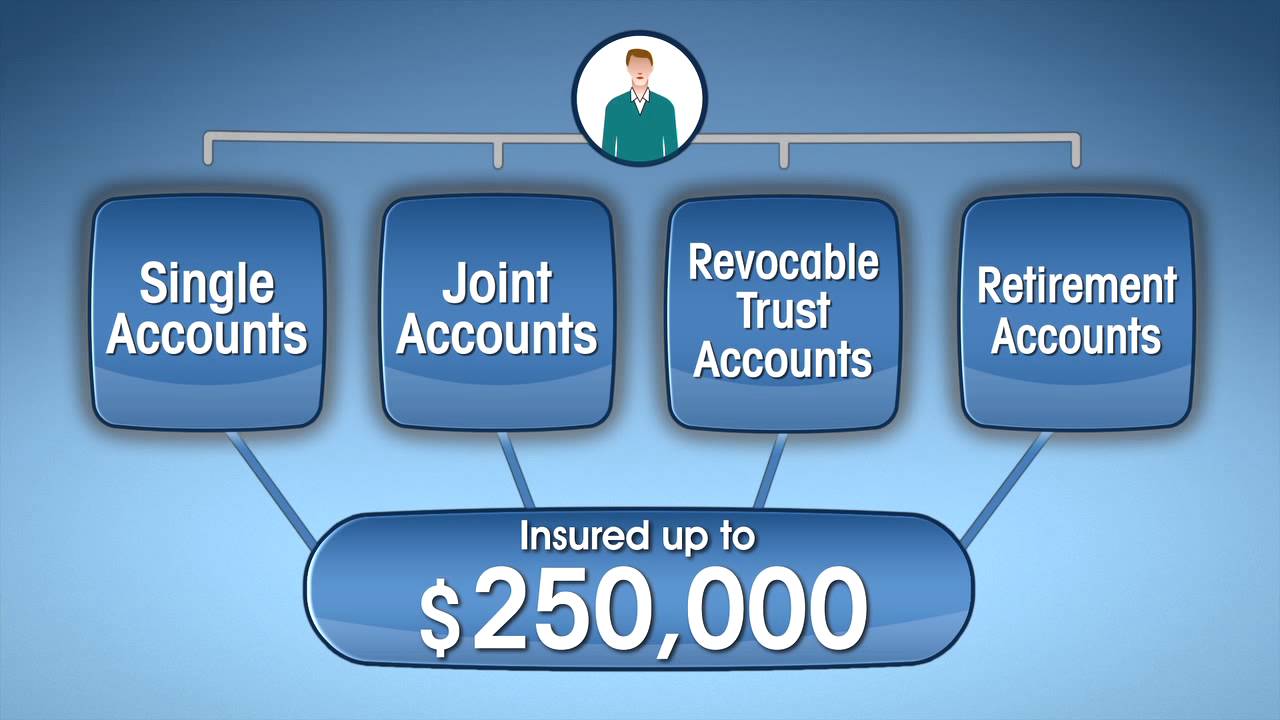

Finance
What Is The Downside Of A Credit Union?
Published: January 13, 2024
Discover the potential downside of credit unions in the world of finance. Understand the limitations and drawbacks of opting for a credit union instead of a traditional bank.
(Many of the links in this article redirect to a specific reviewed product. Your purchase of these products through affiliate links helps to generate commission for LiveWell, at no extra cost. Learn more)
Table of Contents
Introduction
When it comes to managing your finances, Credit Unions are often noted for their customer-centric approach and community-oriented values. Unlike traditional banks, Credit Unions are member-owned and operated, which means that their primary objective is to serve the best interests of their members rather than generating profits.
While Credit Unions have been gaining popularity in recent years, it’s essential to understand the potential downsides that come with choosing this type of financial institution. While the benefits of Credit Unions are widely recognized, it’s vital to consider both the advantages and disadvantages before making a decision.
In this article, we will delve into the various factors that may be considered downsides of Credit Unions. However, it’s important to note that these downsides may vary from one institution to another, so it’s always recommended to do thorough research and speak with representatives from the Credit Union you are considering joining.
Let’s explore the potential downsides of Credit Unions and understand how they can impact your financial experience.
Understanding Credit Unions
Before diving into the potential downsides of Credit Unions, it’s essential to have a clear understanding of what these institutions are and how they operate.
Credit Unions are financial cooperatives that are owned and operated by their members, who are typically individuals or organizations that have joined the Credit Union. The primary purpose of a Credit Union is to provide financial services to its members, including savings accounts, checking accounts, loans, and credit cards.
What sets Credit Unions apart from traditional banks is their not-for-profit structure. While banks focus on generating profits for shareholders, Credit Unions are driven by the needs and interests of their members. Any profits made by the Credit Union are typically returned to the members in the form of lower interest rates on loans, higher yields on savings accounts, or additional services and benefits.
Another key characteristic of Credit Unions is their community focus. They often serve specific geographical areas or common affinity groups such as employees of a particular company or members of a specific organization. This community-oriented mindset allows Credit Unions to tailor their products and services to meet the unique needs of their members.
It’s important to note that Credit Unions are regulated financial institutions, just like banks. They are subject to government oversight and must adhere to strict rules and regulations to ensure the safety and security of their members’ deposits.
Now that we have a basic understanding of Credit Unions, let’s explore the potential downsides that may come with choosing this type of financial institution.
Benefits of Credit Unions
Before we dive into the potential downsides of Credit Unions, it’s crucial to acknowledge the numerous benefits they offer to their members. These advantages are often what make Credit Unions an attractive option for individuals looking for personalized financial services and a sense of community.
- Customer-Centric Approach: One of the main benefits of Credit Unions is their focus on providing excellent customer service. As member-owned institutions, Credit Unions prioritize the needs and interests of their members, striving to build strong relationships and offer personalized assistance.
- Competitive Interest Rates: Credit Unions often offer competitive interest rates on loans, credit cards, and savings accounts. Since they are not-for-profit organizations, they can pass on their earnings to their members in the form of lower interest rates and higher dividends.
- Lower Fees: In comparison to traditional banks, Credit Unions tend to have lower fees for various services such as account maintenance, ATM withdrawals, and overdrafts. This can lead to significant savings in the long run.
- Community-Oriented: Credit Unions have a strong sense of community and focus on serving specific geographical areas or affinity groups. This community-oriented approach allows Credit Unions to better understand the unique needs of their members and offer tailored financial solutions.
- Accessible Financial Services: Many Credit Unions strive to provide accessible financial services to underserved communities or individuals with limited access to traditional banking. This commitment to financial inclusion can make a significant impact on the lives of those who may otherwise be excluded from mainstream financial institutions.
- Member-Ownership: As a member of a Credit Union, you have a voice and a vote in the decision-making process. You have the opportunity to participate in the governance of the institution and have a say in important matters that affect you as a member.
These benefits highlight the unique advantages that Credit Unions offer to their members. However, it’s essential to consider the potential downsides as well to make an informed decision about whether a Credit Union is the right fit for your financial needs.
The Downside of Credit Unions
While Credit Unions offer a range of benefits, it’s important to consider the potential downsides before making a decision. Although these downsides may vary based on the specific Credit Union, here are some common factors to consider:
- Limited Branch and ATM Network: Compared to larger banks, Credit Unions typically have a more limited branch and ATM network. This can be inconvenient, especially if you frequently travel or need access to in-person banking services outside of your Credit Union’s service area.
- Potentially Higher Interest Rates: Although Credit Unions often offer competitive interest rates, there may be cases where their rates are slightly higher compared to larger banks. This can be a disadvantage if you are seeking the lowest possible interest rate on loans or credit cards.
- Limited Product Offerings: Credit Unions may have a more focused range of products and services compared to larger banks. While this can be beneficial in terms of offering specialized services, it may limit your options if you have diverse financial needs or prefer a wide range of products to choose from.
- Membership Restrictions: Credit Unions typically have membership requirements, which can include living or working in a specific geographic area, being part of a particular organization, or having a common affiliation. If you don’t meet the membership criteria, you may not be eligible to join a specific Credit Union.
- Technology and Online Banking Limitations: Some Credit Unions may have limited technology resources, leading to potential drawbacks in their online banking platforms or mobile apps. This may result in less advanced features, slower response times, or a less intuitive user experience.
It’s worth noting that these downsides do not apply to all Credit Unions, and many institutions have made significant strides in addressing these limitations. However, it is crucial to thoroughly research and compare different Credit Unions to ensure that their offerings align with your specific needs and preferences.
By considering both the benefits and the potential downsides, you can make an informed decision about whether a Credit Union is the right choice for you and your financial goals.
Limited Branch and ATM Network
One potential downside of Credit Unions is their limited branch and ATM network compared to larger banks. While Credit Unions strive to provide convenient access to banking services, their physical presence can be more restricted.
Due to their community-oriented nature, Credit Unions often have a smaller number of branches, primarily serving a specific geographic area or affinity group. This can be a disadvantage if you frequently travel or if you need access to in-person banking services outside of your Credit Union’s service area. In such cases, you may incur additional fees for using ATMs outside of your Credit Union’s network, or you may need to rely on alternative banking methods.
However, it’s important to note that many Credit Unions have partnerships with other financial institutions or ATM networks, allowing their members to access a wider network of ATMs. Additionally, advancements in technology have made online and mobile banking more accessible, providing alternative ways to manage your finances and conduct transactions without the need for physical branch locations.
If branch and ATM accessibility is a significant factor for you, it’s essential to research and compare the network capabilities of different Credit Unions before making a decision. Consider your regular banking habits and determine if the available branch and ATM locations align with your needs.
If you frequently rely on in-person banking services or need a broader network of ATMs, a larger bank with a more extensive branch and ATM network may be a better fit for your financial needs. However, if convenience and accessibility are not primary concerns, the personalized service and community-focused approach of a Credit Union may outweigh the limitation of a smaller physical presence.
Ultimately, weigh the importance of branch and ATM accessibility against the other benefits and drawbacks of Credit Unions to make the best decision for your financial situation.
Potentially Higher Interest Rates
While Credit Unions often offer competitive interest rates, there may be cases where their rates are slightly higher compared to larger banks. This potential downside is worth considering if you are looking for the lowest possible interest rate on loans or credit cards.
There are several reasons why Credit Unions may have slightly higher interest rates. First, Credit Unions are typically smaller institutions with limited resources. As a result, they may face higher costs in providing financial services, such as operational expenses or regulatory compliance fees. These higher costs can impact the interest rates they offer to borrowers.
Additionally, Credit Unions are focused on serving their members rather than maximizing profits. They aim to strike a balance between competitive rates and ensuring the financial stability of the institution. While this approach benefits their members through lower fees and better customer service, it may result in slightly higher interest rates to maintain the sustainability of the Credit Union.
However, it’s important to emphasize that the interest rate difference between Credit Unions and larger banks is often minimal and varies depending on the specific financial product and market conditions. It’s always advisable to compare interest rates from multiple institutions before making a borrowing decision.
It’s worth noting that while the interest rates may be slightly higher, Credit Unions often offer other perks that can outweigh this disadvantage. For example, they may provide more personalized loan approval processes, flexible repayment terms, or special programs for members facing temporary financial difficulties.
If obtaining the absolute lowest interest rate is the primary factor in your decision-making process, it may be worthwhile to explore offers from multiple financial institutions, including both Credit Unions and traditional banks, to ensure that you secure the most favorable terms for your borrowing needs.
Ultimately, the potential difference in interest rates should be weighed against the other advantages and disadvantages of Credit Unions to determine if they align with your overall financial goals and priorities.
Limited Product Offerings
Another potential downside of Credit Unions is their more focused range of products and services compared to larger banks. While this can be beneficial in terms of offering specialized services, it may limit your options if you have diverse financial needs or prefer a wide range of products to choose from.
Credit Unions typically prioritize products and services that align with the needs of their specific membership base. For example, a Credit Union serving a specific industry or profession may offer tailored financial solutions catering to the unique requirements of professionals in that field.
However, this specialization can also mean that Credit Unions may not offer as extensive a range of products compared to larger banks. For instance, they may have limited options for investment accounts, credit cards, or specialized loan products. If you have specific financial needs that fall outside the typical offerings of Credit Unions, you may need to explore alternative institutions to find suitable solutions.
That being said, it’s important to recognize that Credit Unions prioritize the quality and value of their offerings over quantity. Their personalized approach often results in more competitive rates, lower fees, and better overall customer service. For individuals who align with their target membership base, the limited product offerings may be sufficient to meet their financial needs.
If you have a diverse range of financial requirements or prefer a comprehensive selection of products and services, it could be beneficial to compare the offerings of multiple institutions, including both Credit Unions and traditional banks. This way, you can ensure that you have access to the specific financial products that align with your goals and preferences.
However, if you value personalized service and tailored solutions over a vast array of options, a Credit Union’s limited product offerings may not be a significant drawback for you.
Consider your financial needs, long-term goals, and priorities when evaluating the limited product offerings of Credit Unions. By doing so, you can determine whether their specialized services align with your unique requirements.
Membership Restrictions
One important factor to consider when evaluating Credit Unions is the membership restrictions that may be in place. Unlike traditional banks that are open to anyone who meets their criteria, Credit Unions often have specific membership requirements that must be met in order to join and become a member.
Membership restrictions can take various forms. They may be based on geographical location, where the Credit Union serves a specific community or region. For example, a Credit Union may only accept individuals who live or work in a particular city or county.
Membership restrictions can also be based on specific affiliations, such as being an employee of a certain company, being a member of a particular organization, or being part of a specific profession or industry. In some cases, family or household relationships may also be a requirement for membership.
These restrictions can potentially limit the accessibility of Credit Unions for individuals who do not meet the specified criteria. If you don’t fall within the defined membership parameters, you may not be eligible to join a particular Credit Union.
It’s important to note that membership restrictions are in place to maintain the cooperative nature of Credit Unions and to ensure that the institution can effectively serve the needs of its target membership base. By having a common bond among its members, Credit Unions can provide more personalized and tailored financial services.
If you are interested in joining a Credit Union but are concerned about membership restrictions, it’s advisable to research and explore different Credit Unions in your area to find one that aligns with your qualifications.
While membership restrictions may seem limiting, they can also offer unique advantages. These include a stronger sense of community, more personalized service, and a greater understanding of the specific needs and challenges faced by the members of that Credit Union.
Consider your eligibility for membership in Credit Unions that align with your geographical location, affiliations, or professional associations. By meeting the membership criteria, you can fully enjoy the benefits and advantages offered by Credit Unions.
Technology and Online Banking Limitations
While technology has advanced significantly in recent years, some Credit Unions may still have limitations when it comes to their online banking platforms and overall technological capabilities. This can be a potential downside for individuals who rely heavily on digital banking services.
Due to their smaller size and limited resources, Credit Unions may not have the same technological infrastructure as larger banks. As a result, their online banking platforms and mobile apps may lag behind in terms of features, usability, and responsiveness.
These limitations can manifest in various ways. For example, the online banking portal may have a less intuitive user interface, limited functionality, or outdated design. Mobile apps may be less robust, and may not offer all the features and conveniences that are typically available with larger bank apps.
Additionally, Credit Unions may not have the same level of investment in technology and cybersecurity measures as larger banks. This can potentially lead to a higher risk of security vulnerabilities or data breaches, although Credit Unions are still subject to stringent security regulations and must comply with industry standards.
However, it’s important to note that many Credit Unions have recognized the growing importance of technology and have made significant efforts to enhance their digital offerings. Some Credit Unions now offer advanced online banking platforms, mobile apps with extensive features, and secure authentication methods to provide a more seamless and secure digital banking experience.
If digital banking and technology-driven conveniences are crucial for your banking needs, it’s recommended to research and compare the technological capabilities of different Credit Unions. Look for institutions that have invested in robust online banking systems, intuitive mobile apps, and strong security measures.
Ultimately, the limitations in technology and online banking should be weighed against the other factors and benefits of Credit Unions. If personalized service, community focus, and competitive rates are more important to you than cutting-edge technology, the potential technology limitations may be a minor tradeoff.
Consider your preferences and priorities when it comes to digital banking and evaluate the technology capabilities of Credit Unions before making a decision on where to keep your finances.
Conclusion
Choosing a financial institution is a significant decision that can impact your financial well-being. Credit Unions offer a unique approach to banking with their customer-centric focus, competitive rates, and community-oriented values. However, it’s important to consider the potential downsides of Credit Unions before making a final decision.
Regarding limited branch and ATM networks, it’s crucial to assess whether the convenience of accessible physical locations aligns with your banking needs. If having a broad network of in-person banking services is essential, a Credit Union’s smaller footprint may not be ideal.
The potential for slightly higher interest rates should be weighed against the numerous benefits Credit Unions provide, including personalized service, better customer experiences, and their not-for-profit structure. Compare rates across different financial institutions to determine the best fit for your borrowing needs.
The limited product offerings of Credit Unions may be a drawback if you have diverse financial requirements. If you seek a wide range of specialized financial products, it’s advisable to examine the offerings of multiple institutions to ensure you find the most suitable options.
Membership restrictions are a unique aspect of Credit Unions. Evaluate your eligibility for membership and consider the advantages of a closely-knit community and personalized service that come with a Credit Union.
Finally, if digital banking and advanced technology are a priority, assess the technology capabilities of Credit Unions and make sure they align with your preferences and banking habits.
In conclusion, Credit Unions offer numerous benefits, including customer-centric services, competitive rates, and a community-focused approach. However, it’s essential to consider the potential downsides, such as limited physical presence, potentially higher interest rates, restricted product offerings, membership restrictions, and technology limitations.
By carefully evaluating these factors and understanding your specific banking needs and priorities, you can make an informed decision about whether a Credit Union aligns with your financial goals and preferences.














